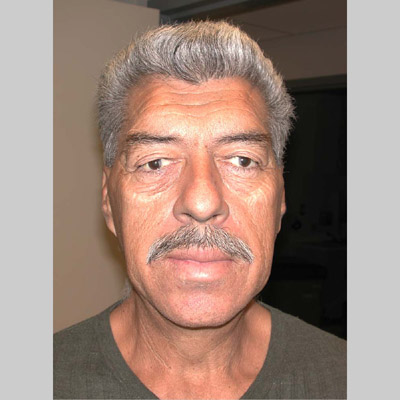1) Does this patient have septic arthritis?
- Identifiable risk factors and arthrocentesis are most useful for predicting septic arthritis. Physical examination and clinical history are less helpful due to non-specific symptoms and signs.
- Age 80+y (LR 3.5)
- Hx rheumatoid arthritis (LR 2.5)
- Hx DMII (LR 2.7)
- Recent join Sx (LR 6.9)
- Prosthetic hip/knee (LR 3.1)
- Overlying skin infection and prosthetic joint (LR 15)
- WBC in synovial fluid: >25, 000 (LR 2.9), >50, 000 (LR7.7), >100,000 (LR28)
- Percentage PMN in synovial fluid >90% (LR 3.4)
- Not helpful: presence/absence of fever, ESR/CRP, peripheral WBC
- Imaging
- Ultrasound can be used to identify an effusion
- MRI best for looking for: fractures not seen on radiograph, signs of osteomyelitis, early signs of AVN and for effusions.
- Management issues:
- Joint destruction can occur within 48 hrs of septic arthritis. Therefore, should get orthopedics involved early as drainage of purulent synovial fluid is important to prevent joint destruction.
Does this patient have septic arthritis - JAMA
2) What is minute ventilation?
- Tidal volume: Quantity of air moved into and out of lungs during a normal breath (normal is 500cc)
- Minute ventilation: Quantity of air moved into and out of lungs during 1 minute (normal is 5-6L)
- Therefore, the maximal L/min of O2 that can be delivered by NP is 6L/min, beyond that, you are not giving any more O2 to the patient, this is approximately equal to FiO2 of 40%
- Delivery of oxygen is limitted by the entrainment of ambient room air (FiO2 of 21%). To increase the amount of O2 delivered you must control to amount of entrained air
- Non-rebreather masks draw oxygen from a reservoir with a one way valve that directs exhaled air out of the mask, thereby limiting the amount of entrained air. These can deliver up to 100% FiO2.
3) Pulmonary Aspergillosis
- Aspergillus is a fungus that is basically ubiquitous, found in both outdoor and indoor environments
- There are 4 classic presentations:
- Allergic bronchopulmonary aspergillosis (ABPA) - common in ashtmatics and CF patients
- Chronic necrotizing pulmonary aspergillosis (CNPA) - common in immunocompromised patients or patients with underlying lung disease
- Aspergilloma: a fungus ball that can grow in pre-existing cavities ie. from previous TB, emphysema, PCP
- Invasive pulmonary aspergillosis (IPA) - occurs in severely immunocompromised hosts with neutropenia or post HSCT
 |
| Invasive Pulmonary Aspergillosis |
- Diagnosis:
- Aspergillus can be a colonizer, so diagnosis is not made solely on the basis of sputum cultures
- The diagnosis of IPA is based on histopathologic evidence of aspergillus invading lung tissue
- Diagnostic criteria for ABPA:
- Hx of asthma, immediate skin sensitivity to aspergillus Ag, aspergillus precipitins, Elevated specific IgG, E, A to aspergillus, central bronchiectasis, serum IgE >1000ng/ml, elevated eosinophils >500/mm, lung infiltrates on CXR
- Treatment
- For IPA, tx should be initiated as soon as there is a clinical suspicion and while confirmatory testing is done.
- Tx depends on the degree of infection. For IPA/CNPA, voriconazole/itraconazole is first line, can use IV liposomal amphotericin b or IV voriconazole for severe infections
- First line treatment of ABPA is corticosteroids, can use itra or vori as steroid sparing agent
Review of Pulmonary aspergillosis





































